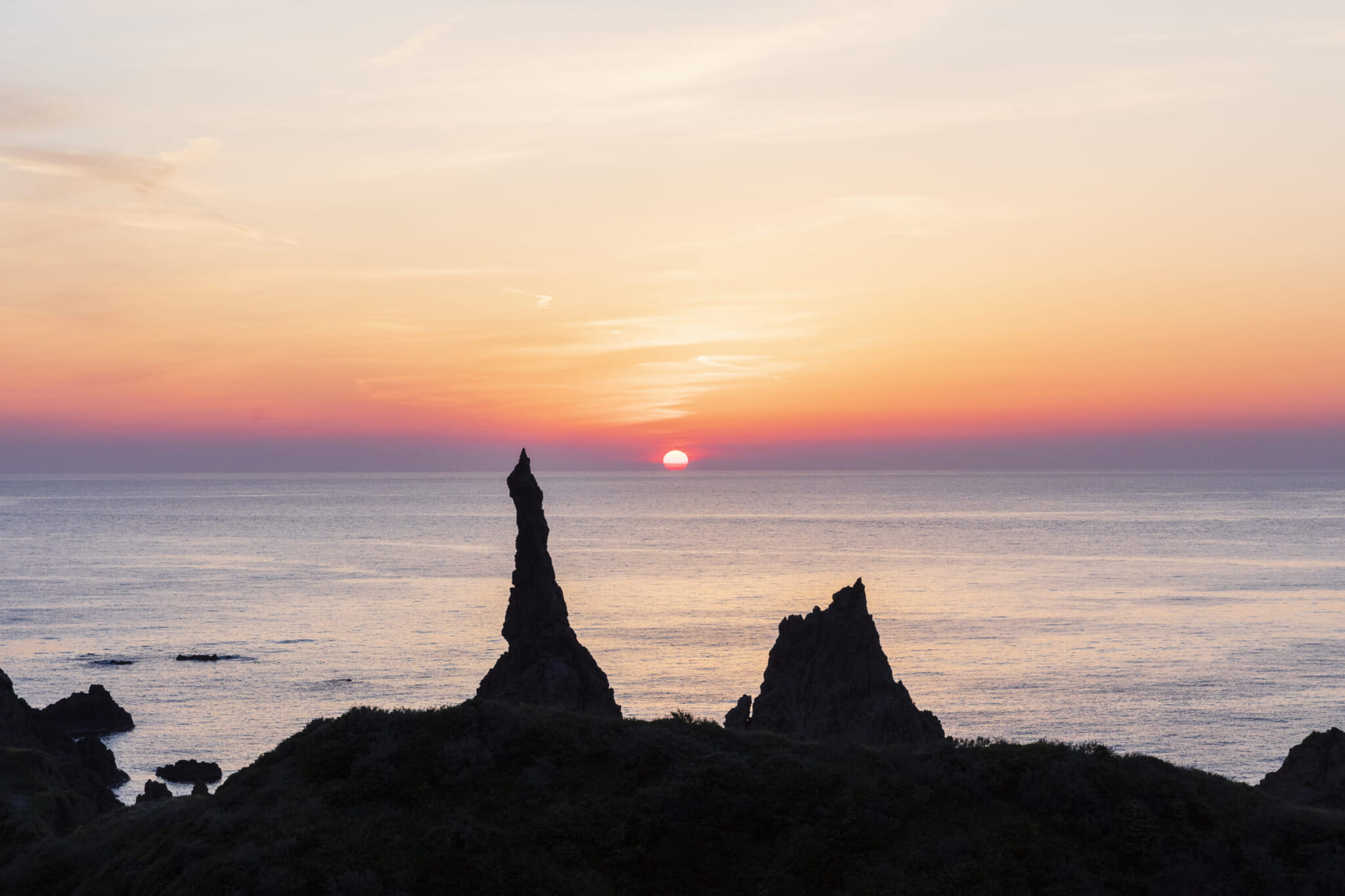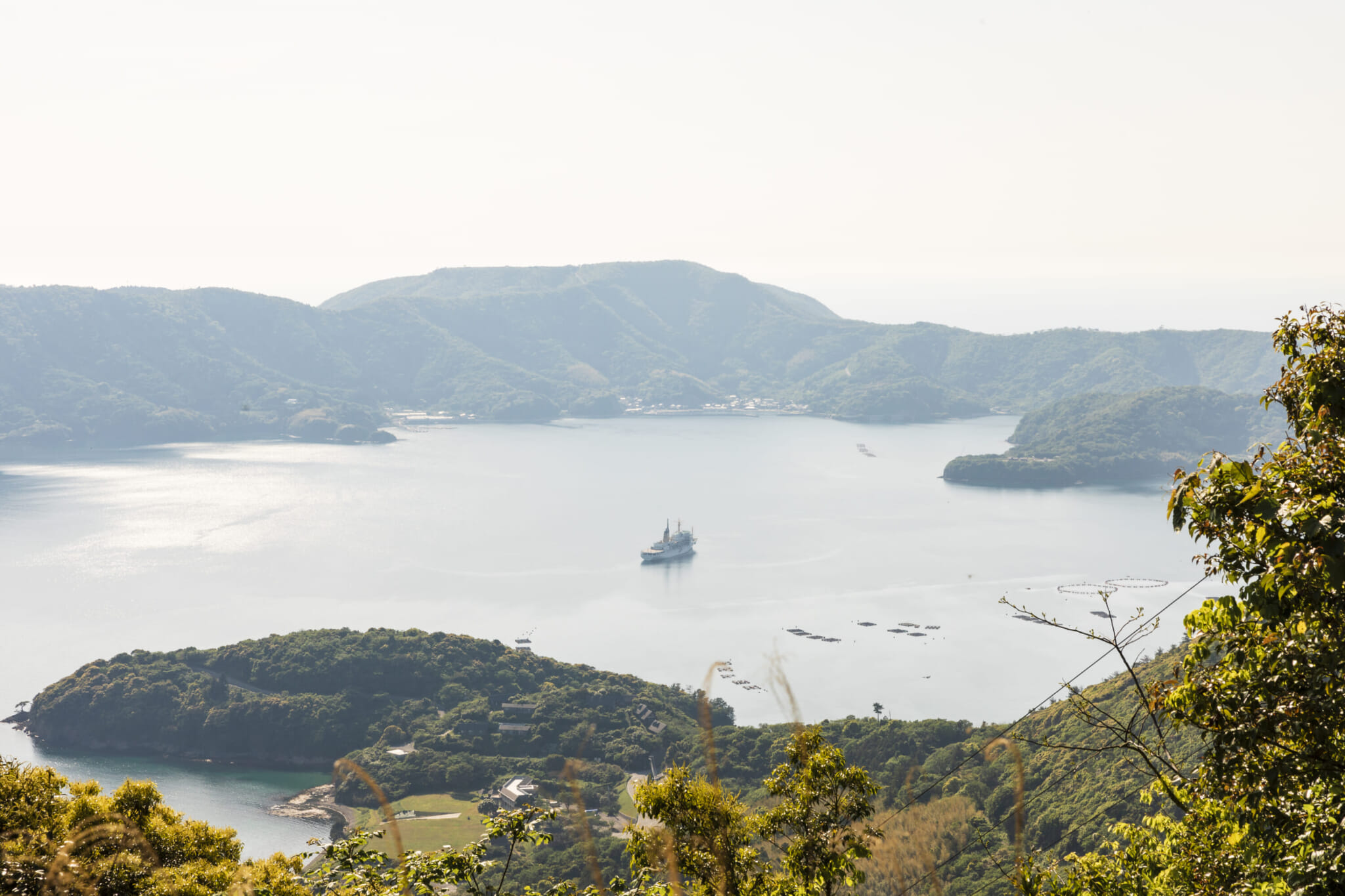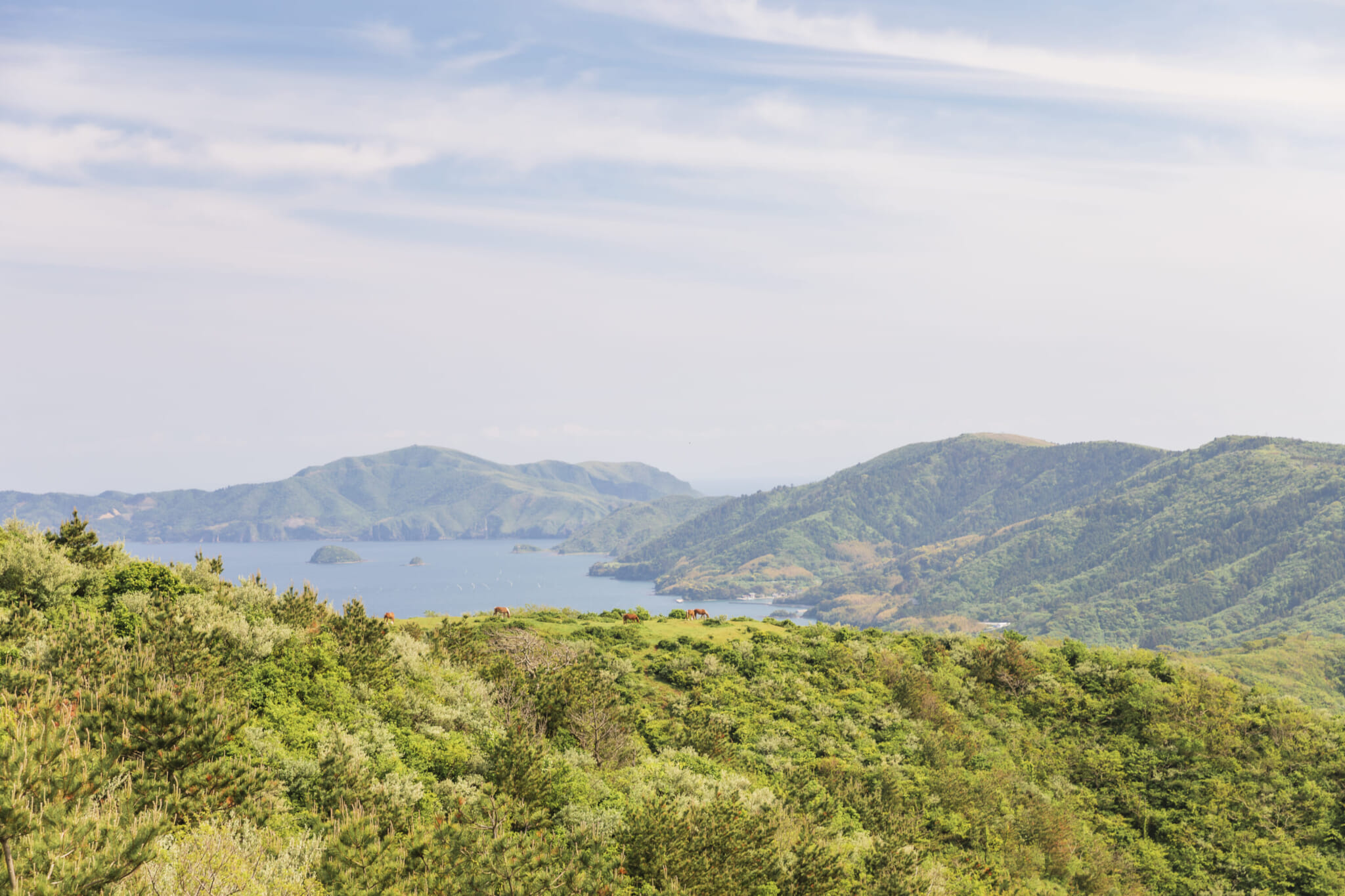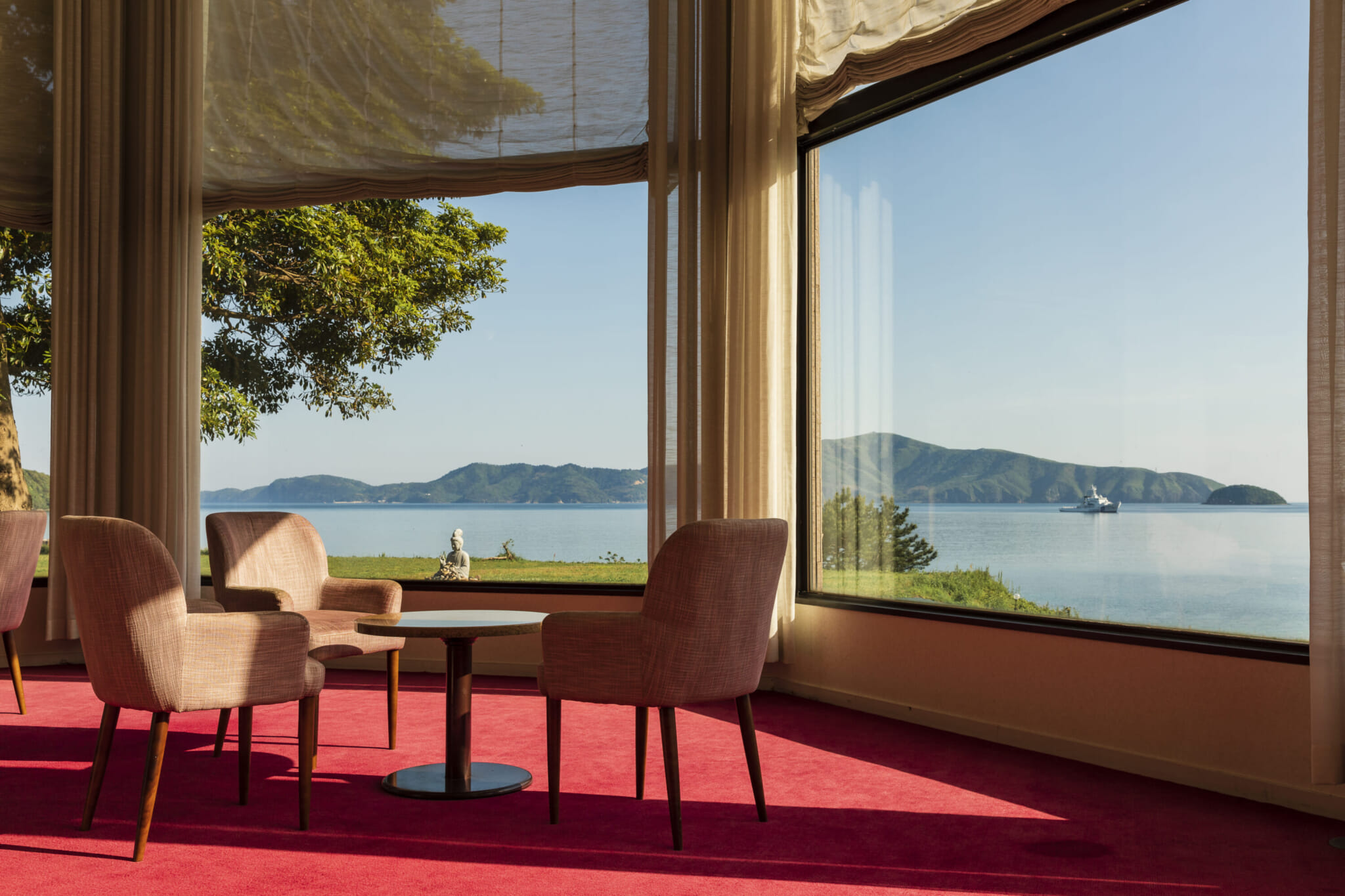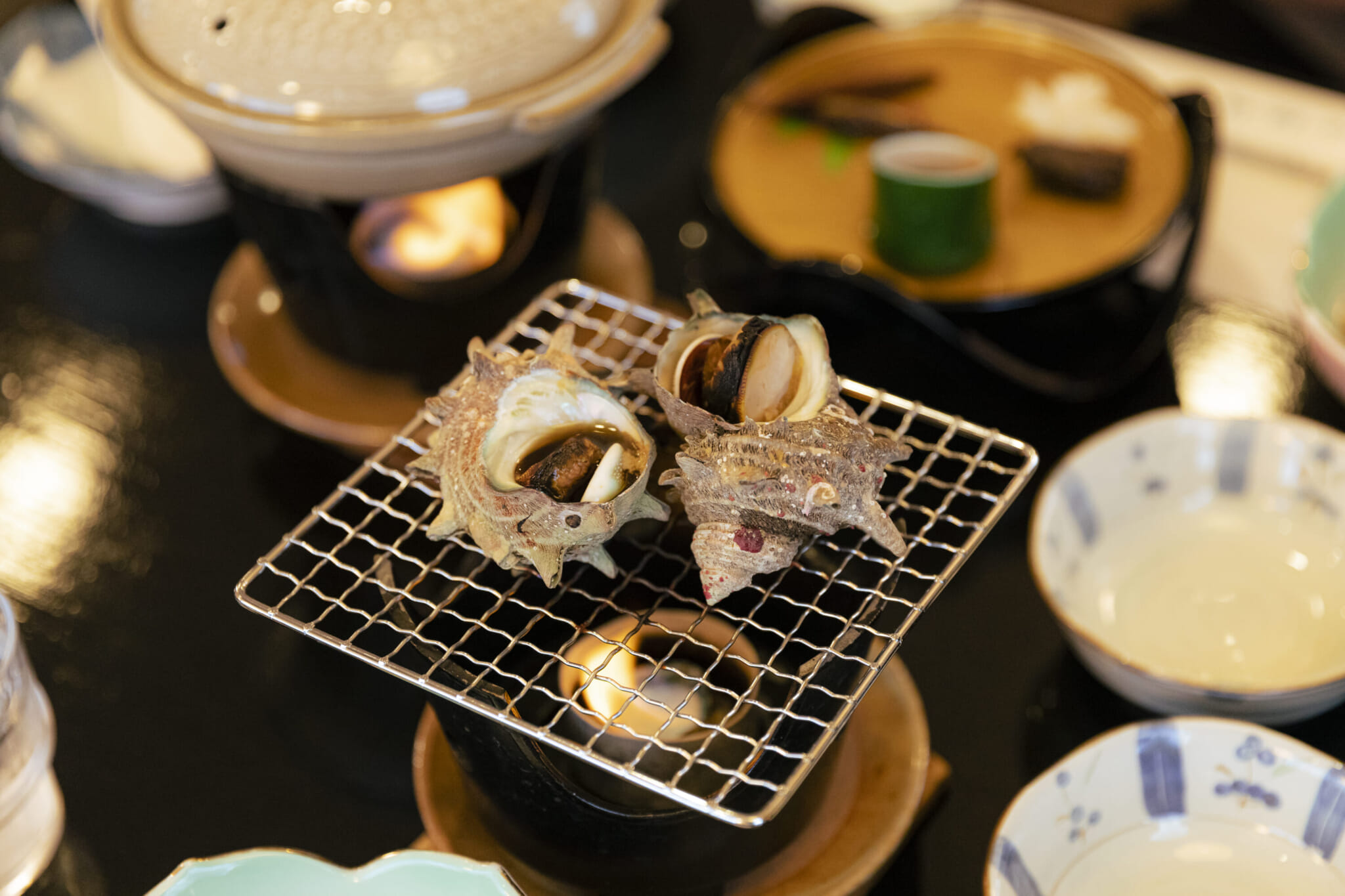Adventure awaits on a distant island off of Shimane Prefecture’s coast. Nishinoshima, one of the four main islands of the Oki archipelago, is a living art space of volcanic activity, culture and biodiversity. Part of the Daisen-Oki National Park and designated a UNESCO Global Geopark, Nishinoshima is abound with endemic flora and fauna and dramatic landscapes. Combined with its romantic pastoral scenes and unique cultural heritage, this island’s rugged charm is unrivaled.
Nature’s Soundscape
Easing into Nishinoshima’s Beppu Port, the island gives the impression of a slow, sleepy town. With a population just shy of 3,000 people, this seems a fair assumption. However, as you make your way into the overgrown woods and into the highlands, you realize Nishinoshima is anything but empty and quiet. The lack of human interference gives nature more room to find its voice.
Heading into Nishinoshima’s highland areas of Matengai Cliff, Onimai Lookout and Akao Lookout, you’ll be met with an environment pulsating with life, from the hum of bees and other insects, to a repertoire of bird song. You’ll find the Japanese bush warblers’ rapid calls and the whirring trills of the blue rock thrushes for most of the year, while the melodious blue-and-white flycatchers and the ringing notes of the narcissus flycatcher only stay for spring and summer. To balance these musical tones, the green pheasant can be heard screeching in spring in the early morning or at dusk.
Far less noisy, an estimated 600 cattle and about 50 horses also roam freely across the highlands, save for a few fences and cattle grids that keep them from wandering into town. They leisurely graze on steep inclines, keeping the overgrowth at bay while naturally fertilizing local vegetation including the endemic Oki thistle, the Oki dandelion and more. Visitors can walk by these noble beasts as they hike without fear, but are still advised not to approach or touch them.
A Gallery of Erosion
The whole island is a showcase of the region’s former volcanic activity, displaying raw layers of solidified magma and debris from multiple eruptions over millions of years. The cliff edges evolve constantly due to strong winds and natural erosion, leaving patches of newly exposed rock — and, in some cases — changing their shape completely, ensuring a new experience with every visit.
A hike along the Kuniga Coast will reveal the 257-meter-high Matengai Cliff — one of Japan’s tallest — and its ochre-stained face as you walk past cows and horses leisurely grazing along its steep inclines. The area encompasses the Tenjokai, which displays several craggy sea stacks and caves, as well as the Tsukenkyo Arch, a natural architectural structure carved by wind and waves. You’ll also find the Kannon-iwa Rock (also sometimes referred to the Candle Rock), which — if you look at it from the right angle — does bear a resemblance to other depictions of the goddess of mercy. Visit in late spring or early autumn to witness the deity’s head become surrounded by a holy golden glow as it is lit up by the setting sun.
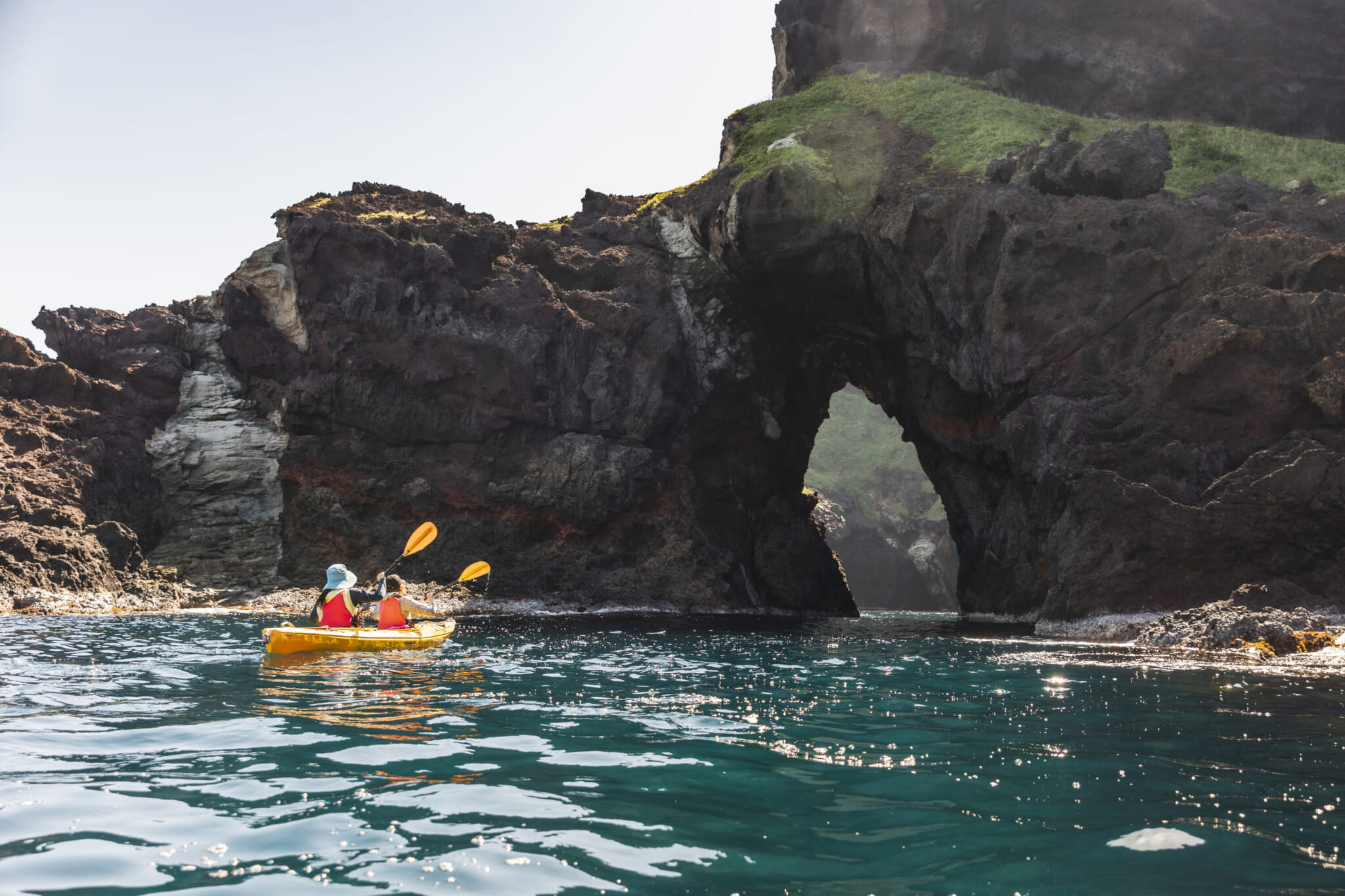
Changing Perspectives
For a whole new perspective on these fascinating structures, head out to sea. Club Noah Oki offers an up-close-and-personal experience through kayaking tours (as well as scuba diving excursions). Paddle your way through narrow crevices and echoing sea caves as Asian house martin flit across the sky outside, and sunlight reflecting on the water creates an ephemeral light show. Guides speak limited English, but are well-versed in transcending linguistical intricacies, so even beginners can feel at ease.
If both hiking and kayaking sound like too much work, hop on a Kuniga Sightseeing boat, which will zip around the island and let you take in the view without lifting a finger. There are two tours — a longer one at 2 hours and 10 minutes and a shorter one lasting just under an hour and a half — but they will both take you around the most thrilling rock formations on and around Nishinoshima, including Matengai Cliff and Tsutenkyo Arch. Enjoy a gallery of rock formation animals, deities and palaces as you drift by, igniting your imagination. Weather permitting, the boat will hug the coast closely in some spots. One cliff looks like a waterfall of earth as poured down its side, while another reminisces of giant brush strokes in ochre. The guides only speak Japanese, but guests will receive a handy numbered pamphlet indicating the rock formation’s names and their meanings in English.
Sacred Spaces
On top of its geological and botanical significance, Nishinoshima boasts more treasures. Takuhi Shrine, found on Mount Takuhi (which boasts another excellent hiking trail) has served as a spiritual center on the island for more than 1,000 years. Its origins hail back to when three glowing balls of fire rose from the sea near Mount Takuhi. The orbs are said to have floated into a cliffside cavern, which is where Takuhi Shrine — then known as Unjoji Temple — was later constructed and now stands. For centuries, the temple served as a lighthouse and was revered as a spiritual landmark for passing sailors. And of those, there were many. The Oki Islands was a vital port of entry for the kitamaebune ships in the Edo era, where boats would carry goods and cultural items from Osaka to Tohoku and back again. Its significance was so profound that Kuniyoshi Utagawa considered the shrine an obvious inclusion in his woodblock print series, “Famous Views of the Sixty-odd Provinces.”
The current main hall — partially prefabricated and shipped in from Osaka — was built in 1732, making it the oldest structure of its kind on the island. The hike up here offers several glimpses of the Dozen Caldera, the submerged pyroclastic cone that Nishinoshima and its neighboring islands of Chiburijima and Nakanoshima surround.
Culinary Creativity
Exploring Nishinoshima’s expansive natural bounty is bound to work up an appetite. There are several restaurants near the urban areas serving delectable local fare. Keishoku Asuka near Urago Port offers nutritious lunch sets with local ingredients. Visitors should call ahead to reserve the daily special, wagatoko teishoku, with its fresh-caught fish of the day, as it sells out fast. Beppu Port has more options, including Tokugawa with its Hiroshima-style okonomiyaki, Nagato with some hearty meals, Café Haru’s pizza and pancakes. Meanwhile, Conseil boasts the island specialty sazae (turban sea shells) in a unique donburi-style dish.
In the Oyama area to the south of Beppu Port, Takuhi Café and Lifestyle takes hospitality to a new level. Housed in a traditional Japanese structure that dates back over 100 years, the café’s proprietress is dedicated to showcase the island’s bounty in every way possible. From seasonal homegrown herbs and spices such as sansho accenting meals and desserts to dai dai jam made using a local citrus fruit and dishes using pasture-raised beef from the café owner’s family farm, every visit is a novel experience. Guests anticipating lunch should make reservations in advance, while those who want a more immersive experience can also book a room here for the night.
Soothing Stays
Though Nishinoshima is small, there are several accommodation offices. Hotel Oki can be found right next to Beppu Port and offers a portside view from most of its rooms. Lavish meals with iwagaki oysters (when in season) and other seafood delicacies take center stage here. Reso Oki Rosage, which can be found facing the sea at the foot of Mount Takuhi, also offers stunning views over the water, which are further enhanced by the hotel’s large panoramic windows. Spacious rooms with large balconies allow for ample admiration of the quiet landscape nearby.
For those looking for more budget-friendly stays, there are several campgrounds (open seasonally) and guesthouses across the island.
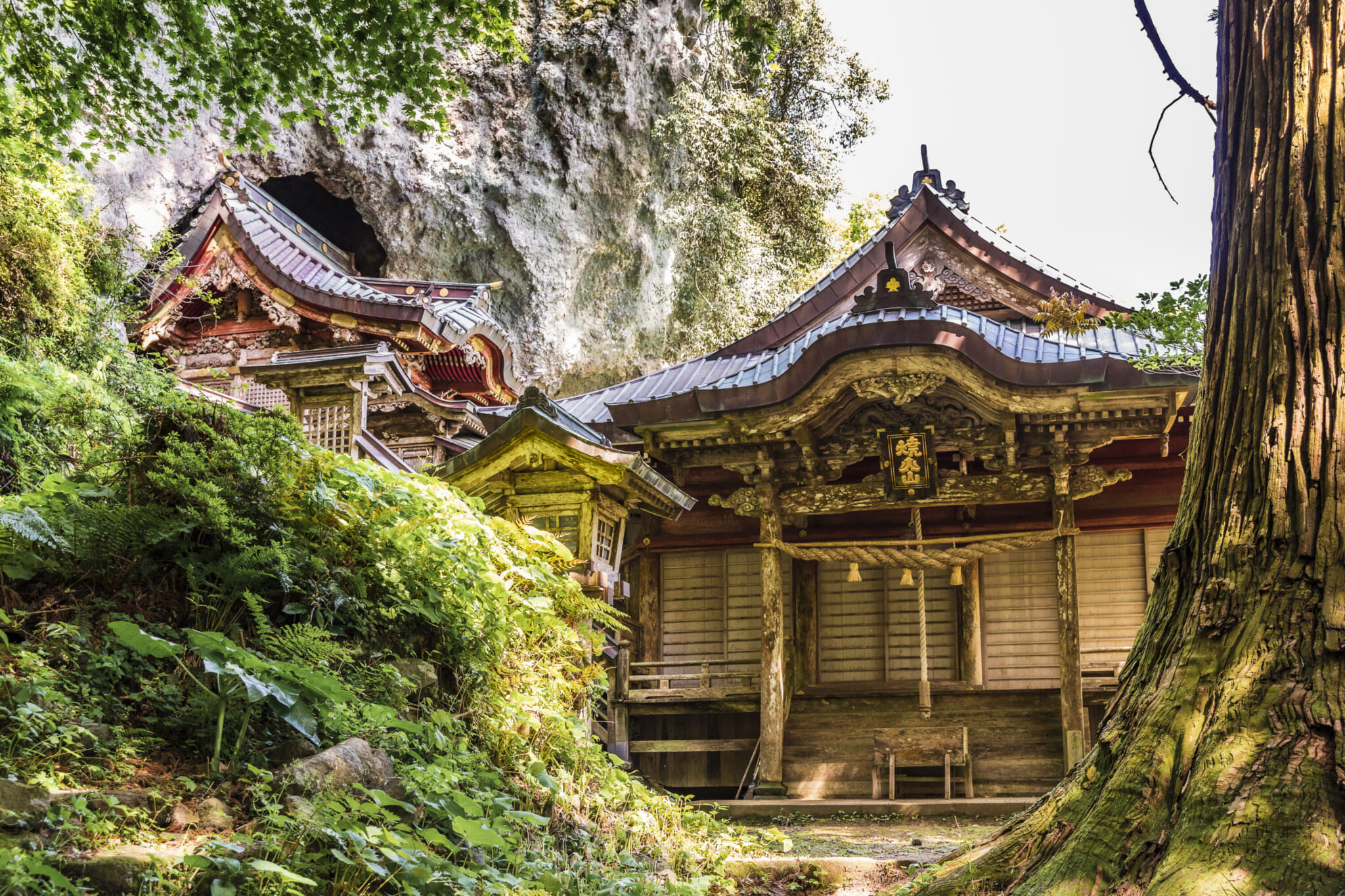
Getting to and From Nishinoshima
Ferries
The Oki Kisen Ferry Line serves the stretch between Nishinoshima and the main island of Honshu, with all ferry services arriving in Beppu Port. Choose between the larger and slightly slower vehicle-carrying ferries, or the passenger-only fast ferry Rainbow Jet. Note that there are limited departures and trips may be canceled in inclement weather.
There are also inter-island ferries with multiple departures daily to the surrounding Dozen Islands, run by Oki Kanko Co., Ltd.
Getting Around Nishinoshima
A rental car is the easiest way to get around, but they get booked up fast so make sure to reserve one in advance. Taxis can be chartered for half- or full-day fares and get a group of people around to the most famous sights at a reasonable price.
Visitors can also rent e-bikes and bicycles at the Nishinoshima Tourism Office at Beppu Port.
Public transport in the form of a local bus service is also an option — it’s a cheap ¥200 fare no matter how far you go — but the routes generally stick to the more urban areas and there are very few departures in a day.
Other Points of Note
Horses and cattle will sometimes stand in the middle of the road. If you are driving or cycling, don’t honk or ring your bell to try to get them to move. Instead, approach slowly and they will walk away of their own accord.
Nishinoshima does not have any convenience stores and there are few vending machines. There are some general stores, but be aware of their opening times to avoid missing out on essential purchases.
While some hotels take credit card payments, it’s best to carry cash around for any other services. There are several ATMs dotted around the island, but note that the post office machines are the only ones that can accept international cards.
More info
Find more useful information and recommendations on Nishinoshima Tourism Association’s website.

